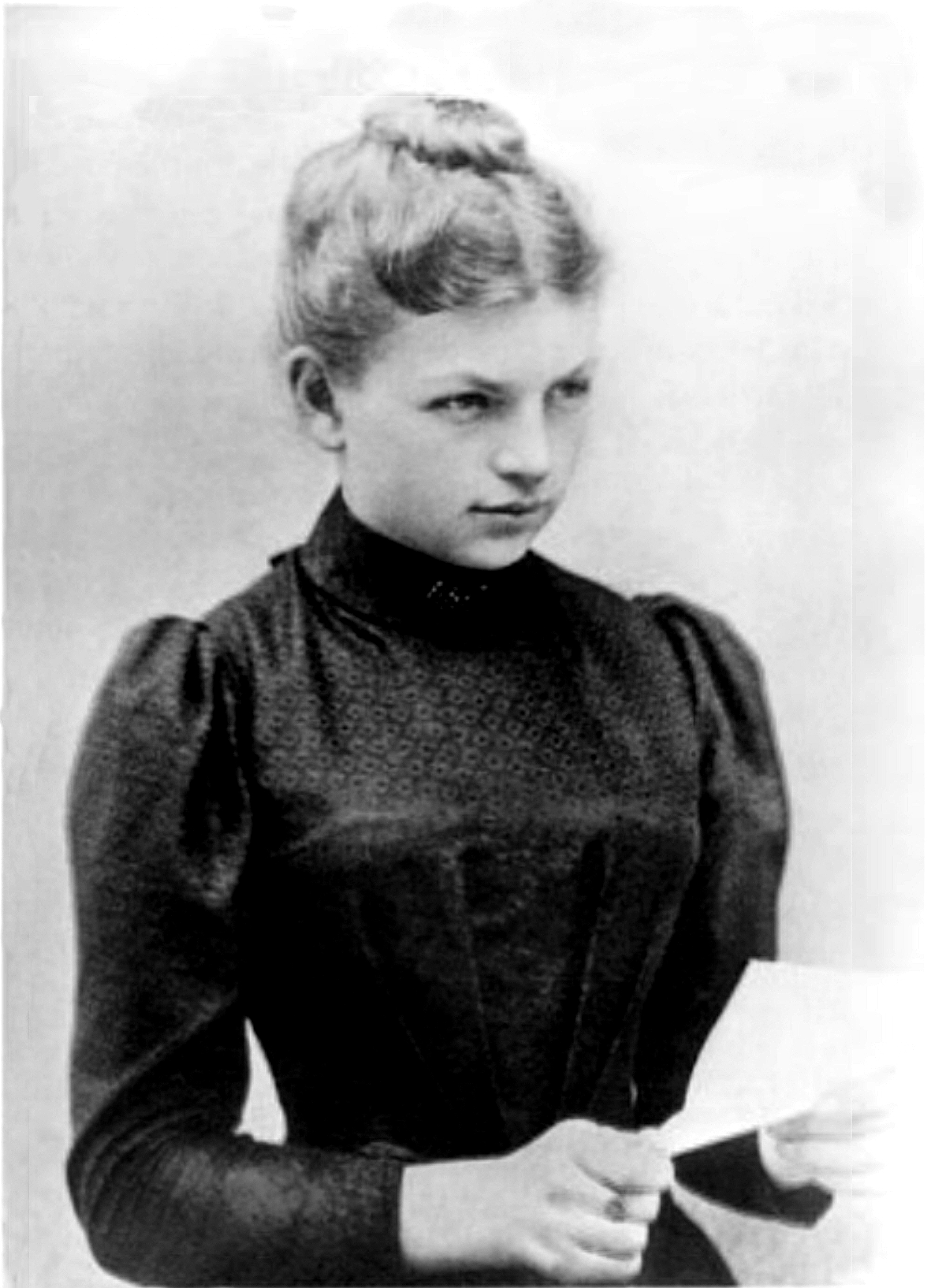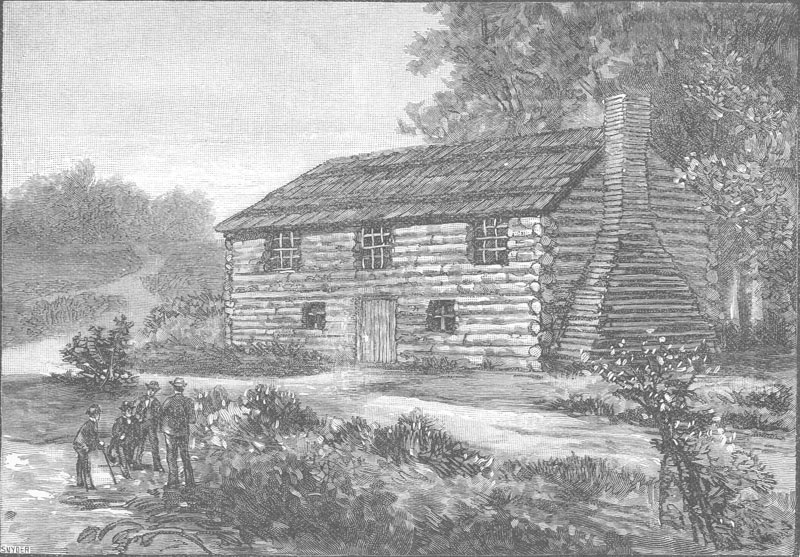|
Georg Bredig
Georg Bredig (October 1, 1868 – April 24, 1944) was a German physical chemist. Bredig was a faculty member at the University of Leipzig (1895-1901) and professor of chemistry at Heidelberg (1901–1910); Technische Hochschule, Zurich (1910); and Technische Hochschule, Karlsruhe (1911–1933). Bredig did fundamental research in catalysis, preparing aqueous colloidal dispersions of metals and comparing the catalytic properties of metal colloids to the action of enzymes (or "ferments"). He made significant contributions in reaction kinetics and electrochemistry. Despite being a respected scientist in his field, Bredig was forced to leave the university by the National Socialists in 1933, ending his teaching and research career. Princeton University offered Bredig a pro forma position, enabling him to emigrate to the United States in 1940. Life Georg Bredig was the son of Max Bredig and his wife Ernestine (Troplowitz) Bredig. He was born on October 1, 1868, in Glogau, N ... [...More Info...] [...Related Items...] OR: [Wikipedia] [Google] [Baidu] |
Metals
A metal (from Greek μέταλλον ''métallon'', "mine, quarry, metal") is a material that, when freshly prepared, polished, or fractured, shows a lustrous appearance, and conducts electricity and heat relatively well. Metals are typically ductile (can be drawn into wires) and malleable (they can be hammered into thin sheets). These properties are the result of the ''metallic bond'' between the atoms or molecules of the metal. A metal may be a chemical element such as iron; an alloy such as stainless steel; or a molecular compound such as polymeric sulfur nitride. In physics, a metal is generally regarded as any substance capable of conducting electricity at a temperature of absolute zero. Many elements and compounds that are not normally classified as metals become metallic under high pressures. For example, the nonmetal iodine gradually becomes a metal at a pressure of between 40 and 170 thousand times atmospheric pressure. Equally, some materials regarded as metals c ... [...More Info...] [...Related Items...] OR: [Wikipedia] [Google] [Baidu] |
Siegmund Gabriel
Siegmund Gabriel (7 November 1851 – 22 March 1924) was a German chemist. Scientific career Siegmund Gabriel began studying chemistry at the University of Berlin in 1871. He continued his studies at the University of Heidelberg in 1872 with Professor Robert Wilhelm Bunsen. In 1874, he received his doctorate and then returned to Berlin. He began teaching as an assistant, initially in the inorganic chemistry department, before becoming an associate professor in 1886. Gabriel later turned to organic chemistry in his own research. One of Gabriel’s most significant contributions to organic chemistry was made in 1887, when he discovered the Gabriel Synthesis with his partner James Dornbush. The Gabriel Synthesis is a reaction which synthesizes pure primary amines, involving the reaction of potassium phthalimide with an alkyl halide, followed by hydrolysis. The Gabriel Synthesis was adapted by Gabriel in 1889 to a procedure for the preparation of amino acids. In 1891 Gabri ... [...More Info...] [...Related Items...] OR: [Wikipedia] [Google] [Baidu] |
August Kundt
August Adolf Eduard Eberhard Kundt (; 18 November 183921 May 1894) was a German physicist. Early life Kundt was born at Schwerin in Mecklenburg. He began his scientific studies at Leipzig, but afterwards went to Berlin University. At first he devoted himself to astronomy, but coming under the influence of H. G. Magnus, he turned his attention to physics, and graduated in 1864 with a thesis on the depolarization of light. In 1867 he became privatdozent in Berlin University, and in the following year was chosen professor of physics at the Federal Polytechnic Institute in Zurich, where he was the teacher of Wilhelm Conrad Röntgen; then, after a year or two at Würzburg, he was called in 1872 to Strasbourg, where he took a great part in the organization of the new university, and was largely concerned in the erection of the Physical Institute. Finally in 1888 he went to Berlin as successor to Hermann von Helmholtz in the chair of experimental physics and directorship ... [...More Info...] [...Related Items...] OR: [Wikipedia] [Google] [Baidu] |
August Wilhelm Von Hofmann
August Wilhelm von Hofmann (8 April 18185 May 1892) was a German chemist who made considerable contributions to organic chemistry. His research on aniline helped lay the basis of the aniline-dye industry, and his research on coal tar laid the groundwork for his student Charles Mansfield's practical methods for extracting benzene and toluene and converting them into nitro compounds and amines. Hofmann's discoveries include formaldehyde, hydrazobenzene, the isonitriles, and allyl alcohol. He prepared three ethylamines and tetraethylammonium compounds and established their structural relationship to ammonia. After studying under Justus von Liebig at the University of Giessen, Hofmann became the first director of the Royal College of Chemistry, now part of Imperial College London, in 1845. In 1865 he returned to Germany to accept a position at the University of Berlin as a teacher and researcher. After his return he co-founded the German Chemical Society (''Deutsche Chemische ... [...More Info...] [...Related Items...] OR: [Wikipedia] [Google] [Baidu] |
Humboldt University Of Berlin
The Humboldt University of Berlin (german: link=no, Humboldt-Universität zu Berlin, abbreviated HU Berlin) is a public university, public research university in the central borough of Mitte in Berlin, Germany. The university was established by Frederick William III of Prussia, Frederick William III on the initiative of Wilhelm von Humboldt, Johann Gottlieb Fichte and Friedrich Daniel Ernst Schleiermacher as the University of Berlin () in 1809, and opened in 1810, making it the oldest of Berlin's four universities. From 1828 until its closure in 1945, it was named Friedrich Wilhelm University (german: link=no, Friedrich-Wilhelms-Universität). During the Cold War, the university found itself in East Berlin and was ''de facto'' split in two when the Free University of Berlin opened in West Berlin. The university received its current name in honour of Alexander von Humboldt, Alexander and Wilhelm von Humboldt in 1949. The university is divided into nine faculties including its ... [...More Info...] [...Related Items...] OR: [Wikipedia] [Google] [Baidu] |
University Of Freiburg
The University of Freiburg (colloquially german: Uni Freiburg), officially the Albert Ludwig University of Freiburg (german: Albert-Ludwigs-Universität Freiburg), is a public research university located in Freiburg im Breisgau, Baden-Württemberg, Germany. The university was founded in 1457 by the Habsburg dynasty as the second university in Austrian-Habsburg territory after the University of Vienna. Today, Freiburg is the fifth-oldest university in Germany, with a long tradition of teaching the humanities, social sciences and natural sciences and technology and enjoys a high academic reputation both nationally and internationally. The university is made up of 11 faculties and attracts students from across Germany as well as from over 120 other countries. Foreign students constitute about 18.2% of total student numbers. The University of Freiburg has been associated with figures such as Hannah Arendt, Rudolf Carnap, David Daube, Johann Eck, Hans-Georg Gadamer, Friedr ... [...More Info...] [...Related Items...] OR: [Wikipedia] [Google] [Baidu] |
Fritz Haber
Fritz Haber (; 9 December 186829 January 1934) was a German chemist who received the Nobel Prize in Chemistry in 1918 for his invention of the Haber–Bosch process, a method used in industry to synthesize ammonia from nitrogen gas and hydrogen gas. This invention is important for the large-scale synthesis of fertilisers and explosives. It is estimated that one-third of annual global food production uses ammonia from the Haber–Bosch process, and that this supports nearly half of the world's population. Haber, along with Max Born, proposed the Born–Haber cycle as a method for evaluating the lattice energy of an ionic solid. Haber, a known German nationalist, is also considered the "father of chemical warfare" for his years of pioneering work developing and weaponising chlorine and other poisonous gases during World War I, especially his actions during the Second Battle of Ypres. His work was later also used to develop Zyklon B, used for the murder of more than 1 mill ... [...More Info...] [...Related Items...] OR: [Wikipedia] [Google] [Baidu] |
Protestant
Protestantism is a Christian denomination, branch of Christianity that follows the theological tenets of the Reformation, Protestant Reformation, a movement that began seeking to reform the Catholic Church from within in the 16th century against what its followers perceived to be growing Criticism of the Catholic Church, errors, abuses, and discrepancies within it. Protestantism emphasizes the Christian believer's justification by God in faith alone (') rather than by a combination of faith with good works as in Catholicism; the teaching that Salvation in Christianity, salvation comes by Grace in Christianity, divine grace or "unmerited favor" only ('); the Universal priesthood, priesthood of all faithful believers in the Church; and the ''sola scriptura'' ("scripture alone") that posits the Bible as the sole infallible source of authority for Christian faith and practice. Most Protestants, with the exception of Anglo-Papalism, reject the Catholic doctrine of papal supremacy, ... [...More Info...] [...Related Items...] OR: [Wikipedia] [Google] [Baidu] |
Princeton University
Princeton University is a private research university in Princeton, New Jersey. Founded in 1746 in Elizabeth as the College of New Jersey, Princeton is the fourth-oldest institution of higher education in the United States and one of the nine colonial colleges chartered before the American Revolution. It is one of the highest-ranked universities in the world. The institution moved to Newark in 1747, and then to the current site nine years later. It officially became a university in 1896 and was subsequently renamed Princeton University. It is a member of the Ivy League. The university is governed by the Trustees of Princeton University and has an endowment of $37.7 billion, the largest endowment per student in the United States. Princeton provides undergraduate and graduate instruction in the humanities, social sciences, natural sciences, and engineering to approximately 8,500 students on its main campus. It offers postgraduate degrees through the Princeton Schoo ... [...More Info...] [...Related Items...] OR: [Wikipedia] [Google] [Baidu] |
National Socialists
Nazism ( ; german: Nazismus), the common name in English for National Socialism (german: Nationalsozialismus, ), is the far-right totalitarian political ideology and practices associated with Adolf Hitler and the Nazi Party (NSDAP) in Nazi Germany. During Hitler's rise to power in 1930s Europe, it was frequently referred to as Hitlerism (german: Hitlerfaschismus). The later related term " neo-Nazism" is applied to other far-right groups with similar ideas which formed after the Second World War. Nazism is a form of fascism, with disdain for liberal democracy and the parliamentary system. It incorporates a dictatorship, fervent antisemitism, anti-communism, scientific racism, and the use of eugenics into its creed. Its extreme nationalism originated in pan-Germanism and the ethno-nationalist ''Völkisch movement, Völkisch'' movement which had been a prominent aspect of German nationalism since the late 19th century, and it was strongly influenced by the paramilitary grou ... [...More Info...] [...Related Items...] OR: [Wikipedia] [Google] [Baidu] |
Electrochemistry
Electrochemistry is the branch of physical chemistry concerned with the relationship between electrical potential difference, as a measurable and quantitative phenomenon, and identifiable chemical change, with the potential difference as an outcome of a particular chemical change, or vice versa. These reactions involve electrons moving via an electronically-conducting phase (typically an external electrical circuit, but not necessarily, as in electroless plating) between electrodes separated by an ionically conducting and electronically insulating electrolyte (or ionic species in a solution). When a chemical reaction is driven by an electrical potential difference, as in electrolysis, or if a potential difference results from a chemical reaction as in an electric battery or fuel cell, it is called an ''electrochemical'' reaction. Unlike in other chemical reactions, in electrochemical reactions electrons are not transferred directly between atoms, ions, or molecules, but via ... [...More Info...] [...Related Items...] OR: [Wikipedia] [Google] [Baidu] |





